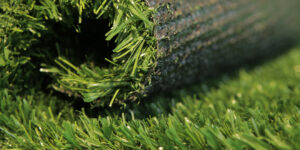
The global artificial turf market is projected to reach a value of USD 3,490.8 million in 2024 and is expected to experience steady growth, with a compound annual growth rate (CAGR) of 6.1% throughout the forecast period. By 2034, the market is anticipated to expand to USD 6,338.4 million, driven by increasing demand across various sectors, including sports facilities, residential landscaping, and commercial applications. Factors such as the need for low-maintenance, durable alternatives to natural grass, alongside advancements in artificial turf technology, are expected to fuel the market’s growth during the coming decade.
Artificial turf, also known as synthetic grass, mimics the appearance of natural grass while offering enhanced durability and reduced upkeep. Once predominantly used in sports stadiums, the material has found widespread adoption in landscaping, pet areas, school playgrounds, and rooftop gardens.
Maximize Your Investment Potential – Get Your Sample Report Now! https://www.futuremarketinsights.com/report-sample#5245502d47422d32303633
Key Growth Drivers
1. Water Conservation and Environmental Benefits
As climate change intensifies, regions prone to drought and water shortages are increasingly embracing artificial turf as a sustainable landscaping option. Artificial turf eliminates the need for watering, fertilizing, and mowing, making it a popular choice in areas with water use restrictions.
2. Rapid Urbanization and Infrastructure Expansion
Urban centers are incorporating artificial turf into a variety of developments, including residential communities, corporate campuses, and public parks. The ease of installation and low maintenance cost make synthetic turf an ideal choice for high-traffic urban spaces.
3. Rising Demand from Sports and Recreational Sectors
Artificial turf continues to dominate in the sports sector due to its resilience and ability to withstand constant wear and tear. Synthetic turf fields allow for extended usage in all weather conditions, making them a practical investment for schools, universities, and sports clubs.
4. Technological Advancements and Innovation
Manufacturers are introducing advanced turf systems that closely replicate the texture and performance of natural grass. Innovations such as shock-absorbing layers, antimicrobial infill materials, and temperature-regulating technology are enhancing user safety and comfort.
5. Landscaping in Arid and Desert Climates
Regions with extreme climates, particularly the Middle East and southwestern United States, are leveraging artificial turf for residential and commercial landscaping. The growing popularity of xeriscaping—landscaping that reduces or eliminates the need for irrigation—has further fueled demand.
Discover Detailed Findings in the Complete Report! https://www.futuremarketinsights.com/reports/artificial-turf-market
Key Takeaways
-
Sustainability Focus: Artificial turf helps conserve water and reduce environmental impact, aligning with global sustainability trends.
-
Urban Growth: Rapid urbanization and infrastructure projects are major drivers of market demand across regions.
-
Sports Sector Demand: Durable and low-maintenance turf solutions remain popular for recreational and professional sports applications.
-
Technology Integration: Advanced turf systems with better aesthetics and performance are fueling market expansion.
-
Regional Surge: Growth is particularly notable in Asia-Pacific, the Middle East, and North America due to climate and development dynamics.
Key Manufacturers in the Artificial Turf Market
- Tarkett Group
- ForeverLawn, Inc
- Koninklijke Ten Cate N.V.
- Cocreation Grass Corporation
- Challenger Industries, Inc.
- Hellas Construction
- All Victory Grass (Guangzhou) Co., Ltd
- PlayCore, Inc
- ACT Global
- Shaw Sports Turf
Navigating the Future of General and Advanced Materials: Insights into Market Dynamics and Growth Drivers
Key Segments of Market Report
By Application:
Application is segmented into contact sports, non-contact sports, leisure, and landscaping. Contact sports is further segmented into football, rugby, hockey, and others. Non-contact sports are classified into tennis, golf, and others. Landscaping is divided in residential and commercial.
By Base Material:
polyethylene, polypropylene, polyamide, and others are the base materials.
By Infill Material:
Rubber-based infills, sand infills, and plant-based infills are the infill materials. Rubber-based infills are segmented into styrene-butadiene rubber, ethylene propylene diene monomers, thermoplastic elastomers, and others.
By End-user:
End-users are government sports, government landscaping, private sports, and private landscaping.
About Future Market Insights (FMI)
Future Market Insights, Inc. (ESOMAR certified, recipient of the Stevie Award, and a member of the Greater New York Chamber of Commerce) offers profound insights into the driving factors that are boosting demand in the market. FMI stands as the leading global provider of market intelligence, advisory services, consulting, and events for the Packaging, Food and Beverage, Consumer Technology, Healthcare, Industrial, and Chemicals markets. With a vast team of over 400 analysts worldwide, FMI provides global, regional, and local expertise on diverse domains and industry trends across more than 110 countries. Join us as we commemorate 10 years of delivering trusted market insights. Reflecting on a decade of achievements, we continue to lead with integrity, innovation, and expertise.
Contact Us:
Future Market Insights Inc.
Christiana Corporate, 200 Continental Drive,
Suite 401, Newark, Delaware – 19713, USA
T: +1-347-918-3531
For Sales Enquiries: sales@futuremarketinsights.com
Website: https://www.futuremarketinsights.com
LinkedIn| Twitter| Blogs | YouTube


